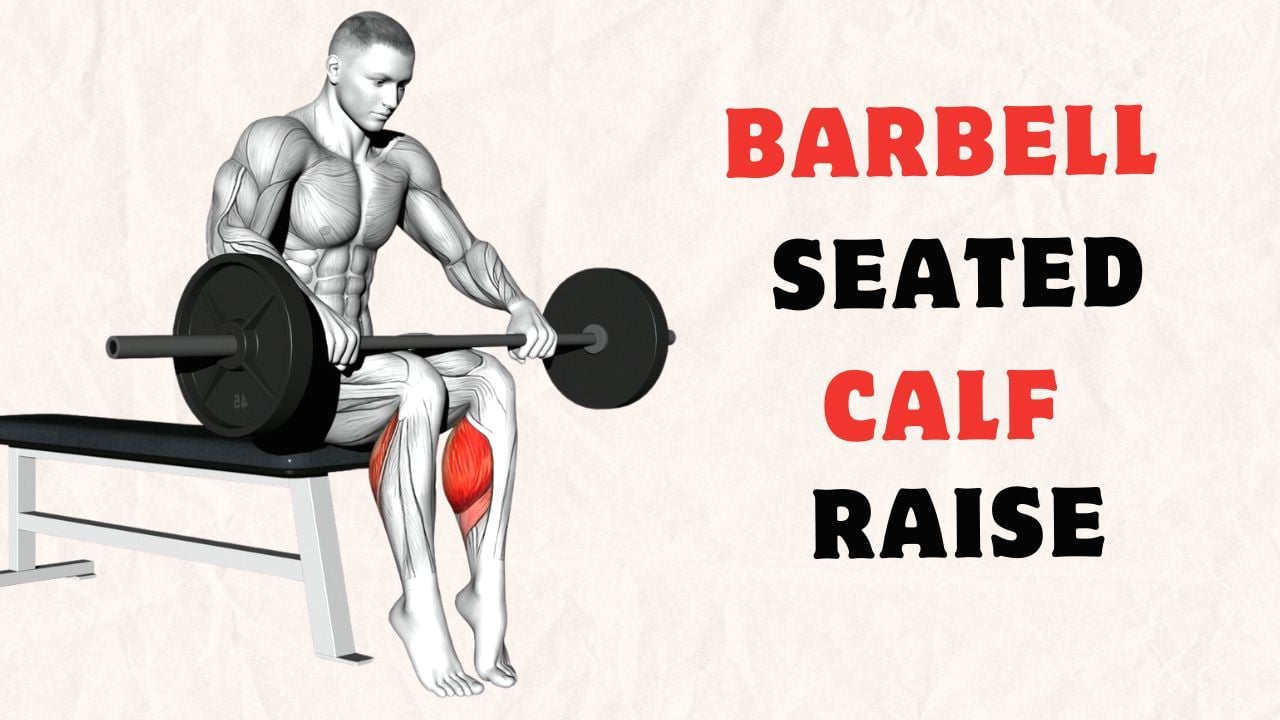The barbell seated calf raise is a great variation of the seated calf raise. This is a very useful exercise if you don’t have access to a seated calf-raise machine.
It’s a simple exercise where you sit on a bench, place a barbell across your thighs, and raise your heels up and down.
Most calf exercises, like standing calf raises, work the gastrocnemius muscle. However, the seated position in this exercise emphasizes the soleus more than the gastrocnemius. The soleus muscle is more active when the knee is bent instead of when the leg is straight.
It also minimizes stress on your lower back, which makes it a great option if you have back issues.
If you haven’t tried the barbell seated calf raise, I highly recommend it. It’s a simple yet highly effective exercise that can significantly impact your lower leg training.

How To Do Barbell Seated Calf Raise
- Sit on the end of a bench or chair and place the barbell on the back of your thighs near your knee but not on your knee.
- You can use a padded barbell for comfort or place a cushion on your thighs if needed.
- Sit up straight and place the top half of your feet or the balls of your feet on the floor or elevated object so that your heels hang off.
- Have a firm grip on the barbell to keep in it in one place.
- Lift your heels by contracting the calf muscles to raise the weight as high as you can on the balls of your feet.
- Hold the top position for a second to maximize the contraction, then lower your heels back to the starting position.
- Do 12 to 20 reps, for muscle endurance and hypertrophy.
Tips and Form
- Keep your heels up while you’re raising your seated calf to avoid releasing tension when your heels touch the ground.
- Strengthen the mind-muscle connection and make the calves workout more effective and focused.
- Avoid leaning back or compromising your posture during seated calf raises. Sit upright with a neutral spine and engaged core.
- Experiment with different toe positions (straight, slightly outward, or inward) to target different areas of your calf muscles
- During the exercise, focus on pressing through your balls of your feet instead of your toes.
- Perform seated calf raises with a full range of motion. Lower your heels as far as possible and raise them as high as possible, while maintaining control and proper form.
- Do not turn your feet excessively. Ensure your feet are aligned with your legs and avoid inward or outward rotation.
- The soleus muscle, primarily composed of slow-twitch muscle fibers, can tolerate more frequent training than other muscle groups.
- One technique that has helped me maximize my calf development is using a slower eccentric (lowering) phase. I’ve found that taking 3-4 seconds to lower the weight helps.

Manish brings over 10 years of hands-on experience in weight lifting and fat loss to fitness coaching. He specializes in gym-based training and has a lot of knowledge about exercise, lifting technique, biomechanics, and more.
Through “Fit Life Regime,” he generously shares the insights he’s gained over a decade in the field. His goal is to equip others with the knowledge to start their own fitness journey.
